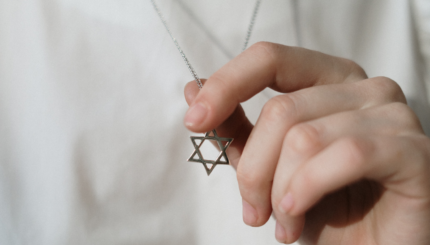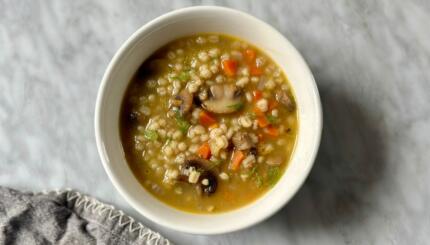I just read this article on Aish.com about embracing converts to Judaism. It had been posted on Facebook by someone I know who is a Jew by Choice, and other Jews by Choice responded that they didn’t like it. Without explicitly stating it, the author of the article is responding to a culture within Judaism that has apparently always existed: suspicion of converts, an attitude toward them that they cannot be “Really Jewish.” As the author implies, when the Torah tells you as many as 46 times to do something—in this case, love the convert—there must be some problem with doing it.
I am a convert to Judaism, and I have encountered the attitude that I am somehow not quite properly Jewish, both from well-meaning Jews and Jews who were not well-meaning. (Never mind that everyone who has ever said or implied this was not a rabbi, and I studied for nine years to become a rabbi, and have been a rabbi for six years.)
The article on Aish.com includes a Midrash intended to illustrate how one should accept a convert. In the Midrash, a deer joins a flock of sheep and won’t leave. The shepherd isn’t sure what to do, but the king says, basically, that it’s amazing that the deer, who has a choice, wants to hang with the sheep, and therefore should not only be allowed to do so, but given extra credit.
There are some issues with this Midrash. First, it’s obvious by looking which is the deer and which are the sheep. With converts, this is not always the case (and beware of assuming that people who don’t look like you expect Jews to look are converts — more on this shortly). Second, how would a shepherd feel about the idea of a deer mating with a sheep? (It seems they would not be able to produce young.) Obviously, a convert should be able to marry and procreate with someone born Jewish, and the Midrash doesn’t account for that. (I do think the rabbis would not have intended the Midrash to be interpreted literally regarding that aspect of it, but it’s there, nonetheless.)
If I were writing a Midrash like this, I might say that in a flock, there are some sheep that are speckled or spotted, and some are a solid color—white or brown or black. One day a bright blue sheep joins the flock. (I know there aren’t bright blue sheep. Just go with me on this, OK?)
The other members of the flock look at the bright blue sheep and say, “Wow, you’re weird. We’re all the same, but you look really different. Why do you think you’re part of this flock?”
The blue sheep answers, “I’m a sheep. I know I’m a different color than you, but I’m definitely a sheep. You know, you’re actually not all the same. Some of you are speckled and some are spotted, and some are a solid color—white or brown or black. I know I’m different in a way you haven’t seen before, but you need to realize that there is a great deal of diversity among sheep—I’m just a kind of diversity you’re less familiar with.”
And then the shepherd says, “Hey, flock. Get over it. Blue sheep are cool. There are differences between you and the blue sheep, and they’re interesting and inform how you experience the world, but when it comes to sheepiness, they aren’t important differences. You’re all sheep.” And every member of the flock who isn’t blue feels a little sheepish.
I believe that it’s time to let go of the notion that all Jews who are born Jewish have a sameness that is distinct from Jews who are converts. Jews who are born Jewish can be Ashkenazi, Sephardi, Mizrahi, Ethiopian. They can be Asian, African, North or South American, Australian, black, white, Latinx—any race, any ethnicity. Then there are the Jews who became Jewish by conversion. They can also be any race and any ethnicity.
In the USA, our ideal used to be that of the melting pot — that all citizens’ ethnic distinctiveness would melt and blend into a sameness that would be “American.” More recently, the ideal image, for some, changed from a melting pot to a patchwork quilt: All the pieces maintain their distinctiveness, but they are all equal in importance and help to make up the quilt.
I suggest that the Jewish people should use that model: We can be a quilt, with Jews who are born Jewish in many different cultures, and converts from many different cultures too. Sameness does not breed creativity or vitality. Variety does. Jews should embrace converts, but it is a fallacy to think that there are only two categories of Jews: born Jews and converts. It’s a lot more complicated than that, and we should not be afraid of that complexity. We should embrace it because that’s an important part of where our richness comes from.
Image by Frank Schwichtenberg, licensed through Wikicommons.



